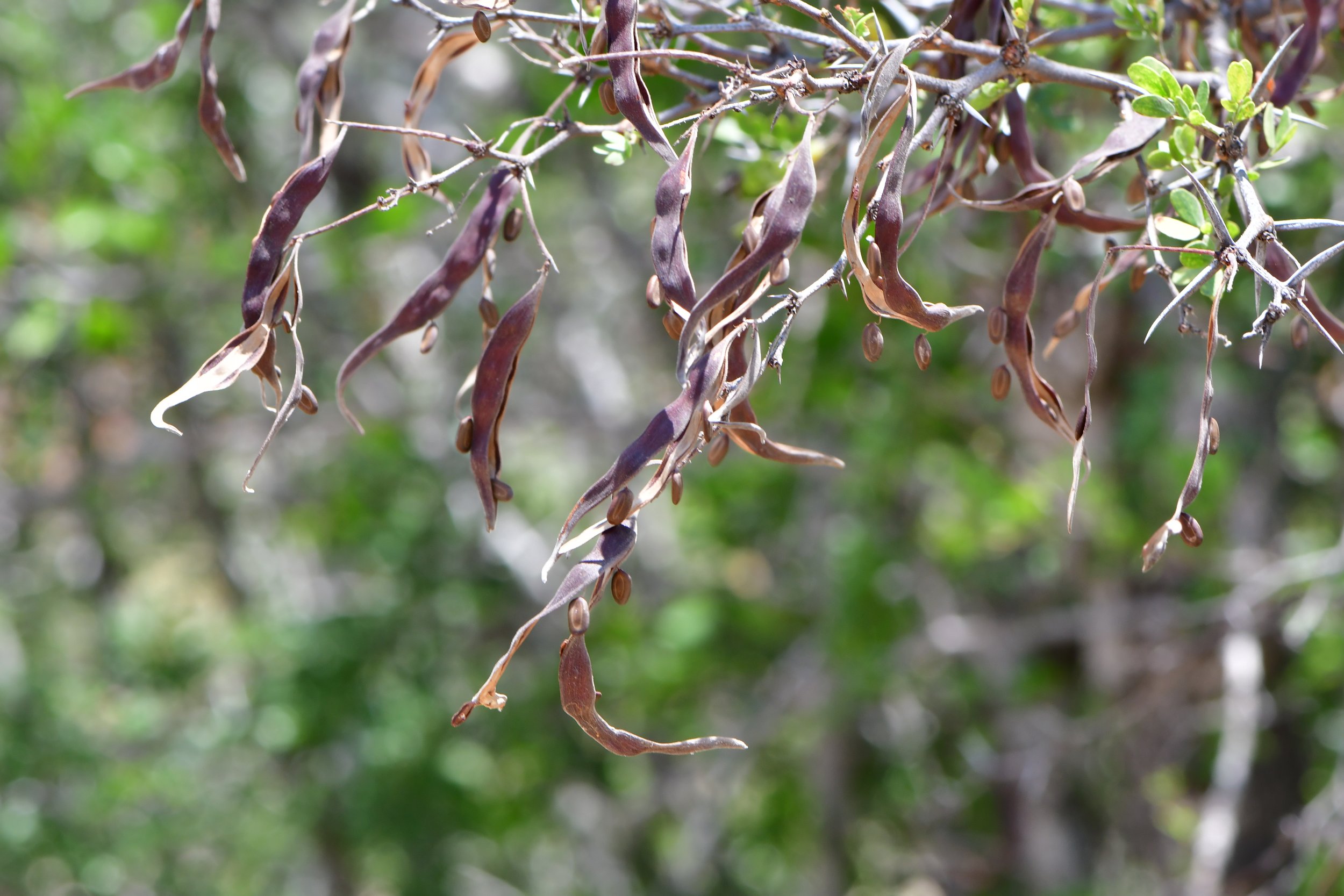LAND CLEARANCE and Rare Plants In South texas
Recently I drove through some spots in South Texas that I frequent to check on the plants there. The temperature was 99 F, but I have grown accustomed to living in the 24-hour Bikram Yoga Studio that is South Texas. I came across many of my favorite members of this plant community in fruit and producing seed, including the rare Asclepias prostrata. Another friend had bagged the seed in order to propagate and cultivate seedlings of this rare plant for a botanic garden in hopes of establishing an ex-situ population of it should the wild populations ever get knocked out (or more likely bulldozed, as Texas affords literally no protections for many of its rare plants). I collected the seed, and tied the bags around the remaining fruits (termed follicles in the case of the Apocynaceae), as the fruits split open when mature and disperse the seeds. Milkweed seeds have a feathery “ploof” attached to them called a coma, making them easily dispersed by wind, thus tying mesh bags around them is necessary.
I also collected seed of Vachellia (formerly Acacia, until it was determined by DNA - as well as common sense - that Acacia was not monophyletic) rigidula, a plant that was incorrectly assumed to contain psychoactive alkaloids in a 98 paper. I believe this was later retracted, but many legumes - and mimosoids specifically - do produce a diverse array of interesting secondary chemicals. My reverence for Vachellia rigidula (also known as black brush) lies not in its chemistry however, but in its ecological importance in its habitat. This tough little legume shrub provides shade for a number of very cool and very rare cacti to grow under, including peyote. Very cacti in South Texas grow out in the open - temperatures are too hot and the sun too strong to make that a photosynthetically prosperous place to grow. The heat and the intense UV will simply shut down photosynthesis in such extreme amounts. So the best place to grow - as the habitat is so extreme - is in the shade of shrubs. And one of the most common shrubs that serves that purpose is a spiny little legume that produces wonderful-smelling flowers called Vachellia rigidula.
I was disappointed to see yet more land clearance, though. I got some photos with a drone, and they are disheartening, showing extensive land clearance. This land clearance is incentivized by the state and local government here, the idea that clearing the land makes it “productive”. It seems a rather shit-for-brained concept, and indeed it is. But again, the culture down here seems to HATE the thornscrub. It is seen as good for nothing save for maybe providing habitat for over-populated deer, of which an entire local industry is centered around (a friend of mine in the area actually ranches deer, which seems to make a lot more sense in this area than ranching cows). I’ve always been somewhat surprised at how undervalued this landscape is. To me, it is one of the most fascinating biological communities in the US, containing plants that grow nowhere else save for maybe a few places in Northeastern Mexico. It does take a rather unenlightened approach to view this habitat as garbage, but view things like McDonalds and Walmart as precious. But the way around this kind of bunk values system is to attempt to slowly change the culture by showing it, not lecturing or shaming it, why such habitat is so freaking cool. How else will local residents realize what biological riches they are living amongst. Quite a few of them already do, but not nearly enough to guarantee that this habitat won’t all be gone or destroyed in thirty years. As it stands now, there is no large preserve anywhere in this region. I hope I live to one day see people here using and appreciating this landscape for botanizing/hiking/ exploring/ revering. I think of how cool it would be if there was something like a peyote preserve or a hiking trail with labels and ids on one member of each plant species for identification and education, to put things in context for the public and show them how invaluable the thornscrub is.
Maybe one day.













